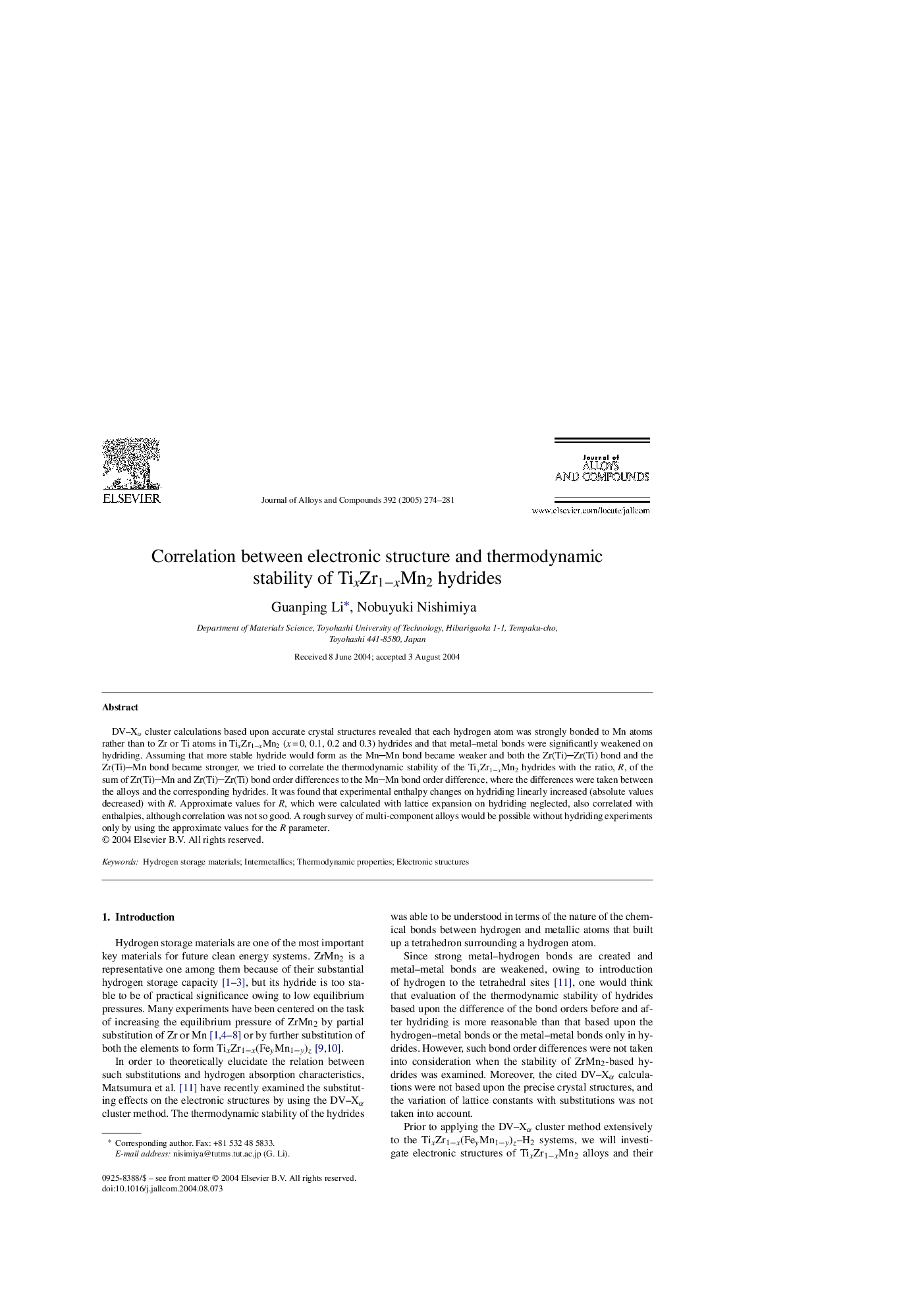| Article ID | Journal | Published Year | Pages | File Type |
|---|---|---|---|---|
| 9803936 | Journal of Alloys and Compounds | 2005 | 8 Pages |
Abstract
DV-Xα cluster calculations based upon accurate crystal structures revealed that each hydrogen atom was strongly bonded to Mn atoms rather than to Zr or Ti atoms in TixZr1âxMn2 (x = 0, 0.1, 0.2 and 0.3) hydrides and that metal-metal bonds were significantly weakened on hydriding. Assuming that more stable hydride would form as the MnMn bond became weaker and both the Zr(Ti)Zr(Ti) bond and the Zr(Ti)Mn bond became stronger, we tried to correlate the thermodynamic stability of the TixZr1âxMn2 hydrides with the ratio, R, of the sum of Zr(Ti)Mn and Zr(Ti)Zr(Ti) bond order differences to the MnMn bond order difference, where the differences were taken between the alloys and the corresponding hydrides. It was found that experimental enthalpy changes on hydriding linearly increased (absolute values decreased) with R. Approximate values for R, which were calculated with lattice expansion on hydriding neglected, also correlated with enthalpies, although correlation was not so good. A rough survey of multi-component alloys would be possible without hydriding experiments only by using the approximate values for the R parameter.
Related Topics
Physical Sciences and Engineering
Materials Science
Metals and Alloys
Authors
Guanping Li, Nobuyuki Nishimiya,
